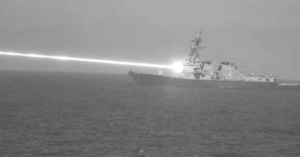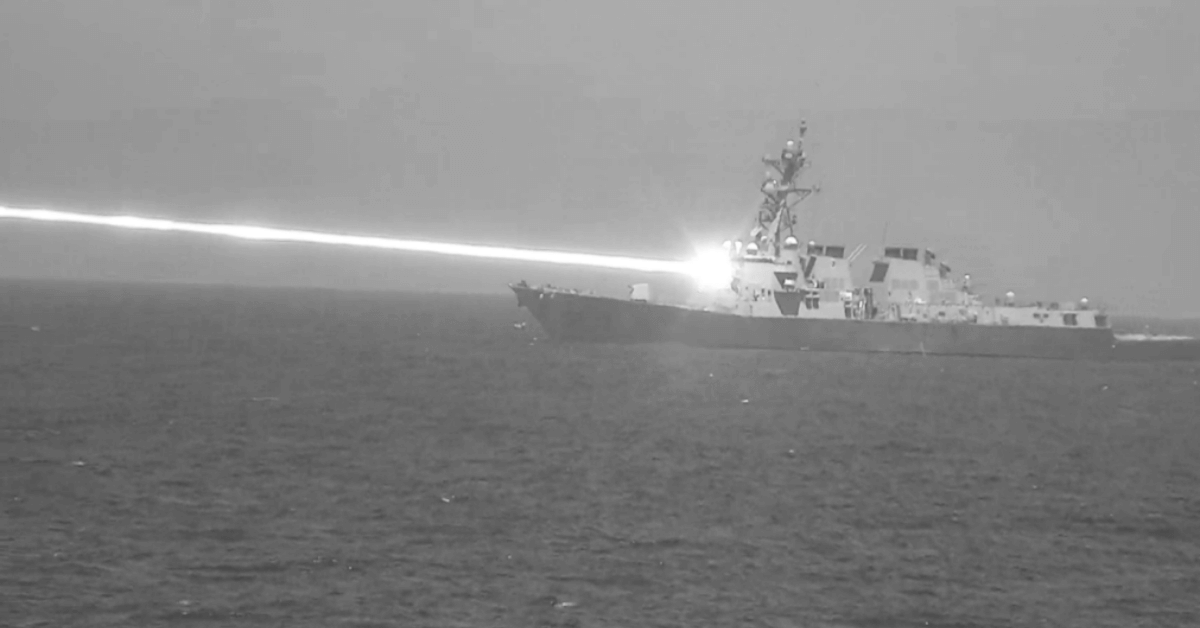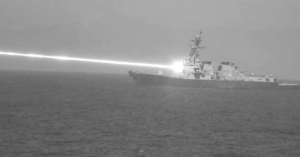
Once The World’s Largest Cruise Ship Arrives In India For Scrapping
February 4, 2025
Panama Grants Free Passage To U.S. Navy, Ends Belt and Road Ties With China
February 4, 2025

The U.S. Navy has successfully tested its HELIOS (High Energy Laser With Integrated Optical Dazzler and Surveillance) laser system aboard the USS Preble, and Arleigh Burke-class destroyer, to take down a target drone in Fiscal Year 2024.
The Navy plans to integrate shipboard laser weapons into their operations, which has faced challenges in the past, with some similar systems experiencing delays and cancellations.
The test aimed to verify the HELIOS system’s functionality, performance and capability. However, the exact location and timing of the test were not disclosed.
The USS Preble, which relocated from San Diego to Japan in September, has had HELIOS aboard since 2022, predating its combat use against drone threats from Houthi rebels.
The system is useful for defending against drones, small boats, and even missiles. It’s especially important as the Navy faces ongoing drone and missile threats in the Red Sea and Gulf of Aden.
HELIOS is a 60-kilowatt system developed by Lockheed Martin, capable of firing more than 60 kilowatts of directed energy, enough to power up to 60 homes.
The system can target objects up to five miles away and is designed to counter threats such as drones, small boats, and missiles along with disrupting enemy surveillance systems.
Its optical dazzler can confuse the sensors on incoming missiles, and its own optical sensors aid in intelligence, surveillance, and reconnaissance (ISR).
The laser system is mounted on Preble’s main forward pedestal, previously used by the Mk 15 Phalanx Close-In Weapons System (CIWS). While other destroyers have CLWS and SeaRAM systems, Preble has HELIOS as an additional or alternative defence measure.
Lockheed Martin received its first contract for HELIOS in 2018, with the system building on years of directed energy research. HELIOS is integrated with the Aegis Combat System, which allows for the coordination of hard kill and soft kill capabilities.
The system is designed for future upgrades, including the potential to reach 150 kilowatts, enabling it to target larger threats, like cruise missiles or aircraft.
The Navy also uses other directed-energy systems, like ODIN (Optical Dazzling Interdictor, Navy), a less powerful dazzler. Meanwhile, HELIOS has been successfully tested against a variety of threats. This includes a demonstration in 2022 where the system took down a drone representing a cruise missile threat.
Additionally, the Navy tested a Laser Weapon System aboard the USS Portland in 2020 to destroy a small drone.
These technologies have faced challenges in moving from the lab to real-world applications. Despite these difficulties, the Navy continues to discuss the importance of shipboard laser weapons, as threats grow more complex and varied.
According to a 2023 report by the Government Accountability Office (GAO), while the Department of Defense has spent $1 billion annually on directed energy weapon development, integrating these systems into active duty remains challenging.
There are concerns about how these systems will function in operational settings, as lasers have limitations like targeting only one object at a time and requiring power and thermal management.
Recent images released by the Navy showcase the laser system in action, firing at a drone and shooting it down in a dramatic display.
References: The War Zone, Armyrecognition
Source: Maritime Shipping News


